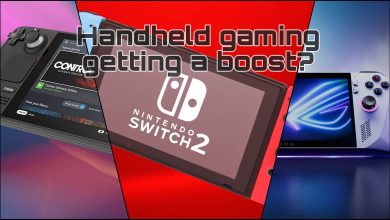Story Highlights
Nintendo has a lot to be proud of; they have made some of the most popular video games and have had a direct hand in steering pop culture; however, many people would agree that the accomplishment they should be most proud of is their lawyer’s ability to win lawsuits.
At this point, Nintendo and class action lawsuits seem to be synonyms. In fact, in the popular book Game Over, Press Start to Continue: How Nintendo Conquered the World, the authors talk about numerous lawsuits that the company had gone through. While the book was first published back in 1993, it is safe to say the company has not strayed too far off.
In an article written by TheGamer, they talk in-depth about some of the most famous lawsuits that the company has filed and won over the years. While most of their lawsuits have settled over the span of a couple of years, there is, in fact, a Nintendo lawsuit that has lasted over 20 years.
According to The Guardian, a magician filed a lawsuit over Pokemon cards. The lawsuit centered around the idea that Nintendo had used Uri Gelle to make their Kadabra Pokémon card. BBC reported that apparently, Nintendo had used his name and signature image, making him into an “evil, occult Pokémon character.”
While this lawsuit may have lasted two decades, thankfully, the Joy-Con Drift Lawsuit did conclude comparably faster.

Background
According to Video Games Chronicle, in 2019, many Nintendo Switch users had been facing the issue of their Joy-Con controllers drifting. This happens when the controllers continue registering movement even though the controller is not being actively touched.
In just a few days, videos of the Joy-Con drifting were all across social media, making it seem like a lot of people who owned the Nintendo Switch had the same issue.
However, that was not necessarily true. While speaking to GameDaily, an attorney (Brandon J Huffman) for the Odin Law and Media gave his two cents about the situation. He said, “I think social media has amplified this to be larger than it actually is.”
Interestingly, a Canadian law firm Lambert Avocats filed a class action lawsuit for the entire region of Quebec. Furthermore, a French consumer advocacy group filed a similar action suit.
The Lawsuit

In the midst of the drifting Joy-Con fiasco, Nintendo was hit by putative class action. The plaintiffs included two minors named M.S (male) and A.D (female). Since the plaintiffs were underage, the case was brought by their guardians, Luz Sanchez and Dolly Viera.
Luz Sanchez alleged that she bought her son the Nintendo Switch multiple times, and each time they had noticed a drift. This caused her to take matters to court. While Nintendo was actively trying to fix the issue, even the company’s president made a public statement apologizing. Luz Sanchez believed it was too little too late.
As per Wired’s reporting, Luz Sanchez’s lawyer put out a statement that said, “Defendant continues to market and sell the Products with full knowledge of the defect and without disclosing the Joy-Con Drift defect to consumers in its marketing, promotion, or packaging,”
It continues, “Defendant has had a financial motive to conceal the defect, as it did not want to stop selling the Products, and/or would need to expend a significant amount of money to cure the defect.”
The lawsuit was taken to court; however, the Plaintiffs did not take into account the End-user license agreement. The EULA is a legally binding contract between the owner of a product and the end user. In this case, Nintendo would be the owner, and the plaintiffs would be the end users.
The EULA made it possible for Nintendo to discredit the lawsuit as it includes a waiver on pursuing any class-action suits against the company.
While this should have been enough to win the case, there was one huge issue. The EULA is only legally binding if the user is 18 years old or above. Since the users were young kids, 9 or 10 years old, the only way for Nintendo to have the upper hand in the lawsuit was if they were able to prove that the adults were the real owners of the Nintendo Switch.
While it was stated that the case could not continue with the class action lawsuit, the issue surrounding whether or not the minors could file the lawsuit helped propel it forward. This grey area was further scrutinized in a second motion whose documents have been unsealed for public viewing.
The court hearing was done in the United States District Court Northern District of California under Case 3:20-cv-06929-WHA. The District Court judge William Alsup made an interesting ruling regarding the case.
The court document gave further insight into the plaintiff’s claim. The claim is as follows,
Plaintiffs allege the Nintendo Switch video game console, working as a unit with two hand-held controllers (‘Joy-Cons,’) harbored a defect, which caused an on-screen avatar to move without direction from the player. The defect grew worse over time to the point where plaintiffs assert the consoles became unusable.”
However, the motion was denied for a second time. The main reason was that the minors who were the ones suing Nintendo did not have the transfer of right to sue.
The plaintiff had to prove that they must be the one who had suffered an injury due to unfair competition or false advertising. However, since the minors were not the ones who had bought themselves the Nintendo Switch, they could not prove there had been harm or injury because of unfair competition or false advertising. This gave Nintendo a massive edge in the lawsuit.
Where Are We Now
Since Joy-Con came out, it has been going through incremental changes. Due to the company starting the refund or free Joy-Con repair options, the complaints for it have gone down massively. While it seems hard to pinpoint why the drift problem may have started, The Verge does have some ideas.
They claim that one of the reasons for the drift could be due to the fact that dust or other debris could be getting stuck under the rubber cap of the controller. Moreover, another plausible reason could be that the repetitive use of the Joy-Con may have caused the drift.
For many, it does not matter why the drift happens as long as it can be fixed, and for that, Nintendo has us covered.
Thanks! Do share your feedback with us. ⚡
How can we make this post better? Your help would be appreciated. ✍



